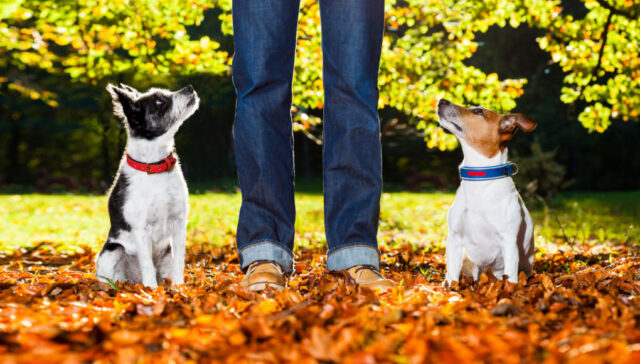
Table of Contents
“What are the common mistakes dog owners make in dog parks? I need to know so I know what to do.”
If this is something you've been thinking about for quite a while, then you're in the right place!
What you're about to learn is important not just for your furbaby’s safety but for the other dogs he is playing with.
By arming yourself with the right etiquette, you can make the dog park a joyful and safe environment for all dogs.
That said, it’s wise to start off by remembering these 15 common mistakes dog owners make in dog parks.
15 Mistakes Dog Owners Make In Dog Parks
It can be enjoyable to visit a dog park with your four-legged companion.
Fido can bond with other dogs and interact with them while also getting some exercise.
As a paw-rent, taking your dog outside can be rewarding as it allows him to run free in a green, spacious area.
But did you know that there are some unwritten rules you should abide by to ensure everyone's safety?
When you don't follow dog park rules, various problems can arise—from small disputes to dog fights and attacks.
Not just that—dog park diseases will spread more easily and hurt our dogs if we don't take responsibility.
For you to be aware and avoid any of these dangers, you need to know these common mistakes dog owners make in dog parks.
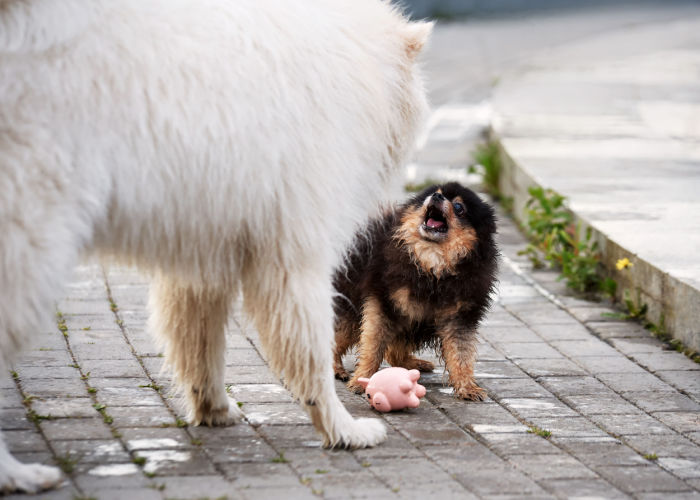
1. Small dogs in the same play area as large dogs
Remember: one size does not fit all. Large and little dogs should have their own spaces.
You might ask, “Is it necessary when the vicinity is large enough to accommodate dogs of all sizes?”
Well, it has to do with some large-breed dogs' predatory nature.
Take it from me, friends.
I once saw a young woman carry her Pomeranian into the area of the park designated for large dogs.
Unfortunately, there was a large breed of dog in the nearby area.
What followed was that it went near the poor little puppy—barking and growling at it.
I was so anxious for the two dogs, especially when the big one was just a few inches from the Pom.
Fortunately, both dogs were on leashes, and the owners were able to tug the two dogs away from each other just in time.
It wasn’t my dog, but I couldn't imagine if the same scenario happened to me and my pooch!
We certainly don't want our beloved dogs to go through this, but sadly, this is just one of the common mistakes dog owners make in dog parks.
Let this incident serve as a lesson for us, folks.
2. Bringing small children
How would you react if a strange dog at the dog park attacked and hurt your child? Would you hold yourself liable?
A dog park is a place that has been established as a space for dogs to walk around and be themselves.
In your defense, you might say, “But my child is well-behaved and responsible.”
You see, the issue is that you have no control over how strange dogs behave.
Take this news as an example where dogs attacked three kids in Queensland in separate incidents.
One was a young boy bitten by a dog at Shailer Park and sustained a head injury.
Another toddler was bit on the head and neck on the Gold Coast.
A three-year-old girl who had numerous bites also sustained serious injuries.
If you think about it, kids have amusement parks, swimming pools, and playgrounds where they are free to play and run around in circles as much as they want.
Our dogs only have dog parks.
We can at least keep the two apart and give our dogs the sanctuary to let loose, right?
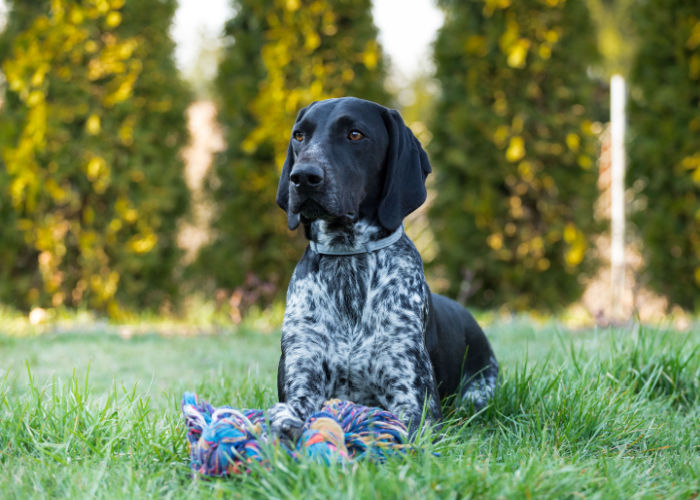
3. Bringing dogs that have resource-guarding problems
Alright. Let’s have a quick assessment here.
Does your dog like to share toys? Or does it steal toys from other dogs?
Whether he’s the former or the latter, we can guarantee he won't enjoy himself at the dog park.
Anything might be valuable for our dogs, including their favorite toy and feeding bowls.
When other dogs attempt to approach the object Fido is guarding, he displays overt anger and may engage in a fight with them.
In case you were wondering, resource guarding is a characteristic all dog breeds naturally exhibit.
Before it becomes a problem, early training of your pawed pet will allow you to curb this behavior.
RELATED: Possession Aggression in Dogs: The Ultimate Guide
4. Bringing a female in heat or a pregnant dog
This should be pretty obvious, right?
Some dog owners, for some reason, believe it's acceptable to take a female dog in heat to the dog park.
You should never ever do this because it will cause chaos among all the other dogs in the vicinity.
Even if you believe your dog is the most well-mannered and has undergone obedience training, heat can cause odd behaviors and hormonal impulses.
According to Michael Kearley, DVM, your female dog will consent to mate when she is in estrus, sometimes known as “heat.”
When she is in heat, she will produce different pheromones in her vaginal and urine secretions.
These pheromones are detectable by male dogs' sensitive senses.
You are aware of where this is going. This might lead to unintentional breeding.
RELATED: Dog in Heat? A Guide for Pet Owners
5. Not paying attention to your dog
Another one of the mistakes dog owners make in dog parks is unattentiveness after letting their dogs run free when they arrive.
Don't allow yourself to lose focus while taking in the greenery.
Fido might be engaged in play one moment and fighting the next!
To ensure that your four-legged pet is playing nicely with the other dogs, keep a close check on him at all times.
As a pawrent, you should be able to read your dog's body language and know how to break up a dog fight safely.
Call Fido back immediately if you notice any signs of impending hostility.
RELATED: Dog Fights: An Informative Guide On How To Stop Them
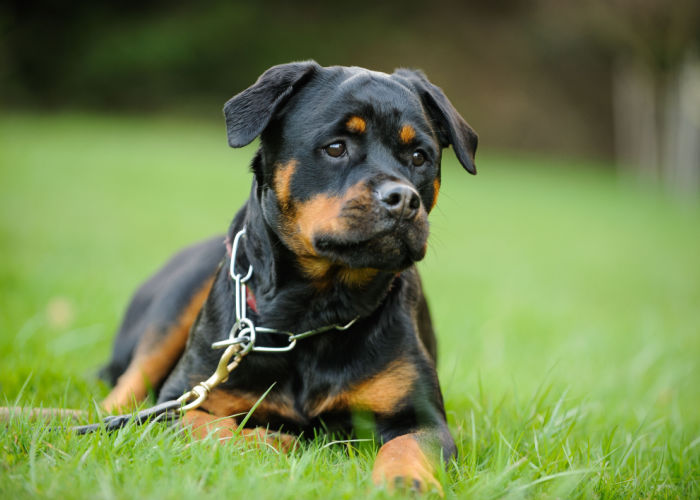
6. Keeping leashes, harnesses, or prong collars on your dog
It’s a dog park, after all! Fido is meant to have his own space and be able to play freely there.
One of the mistakes dog owners make in dog parks is insisting on keeping the leash on, even in the play area.
If you believe this approach is safer, consider that leashes can tangle dogs, which can result in fights or accidents.
Not only that. Prong collars and harnesses have metal parts that your dog might unintentionally bite and hurt themselves.
Did we mention that using a retractable leash is equally risky?
If extended, more dogs on the loose could run right into it and sustain injuries.
Your furry buddy may also suffer if he chases another dog. He might snag the cord's end and get his neck snapped!
None of us want any of these to happen.
There's a reason why some dog parks have designated “off-leash” or “play” areas. We advise providing your dog with this freedom of movement.
7. Using the dog park as the dog’s only exercise
Dog owners also make the mistake of using the dog park as their dogs’ primary source of exercise.
This is wrong. Dog parks are meant to be an addition to the regular exercise that your dog receives.
Dr. David Horan says dog parks should be a reward for Fido and should not be the only source of exercise.
He added that “dogs that do not exercise regularly get stir crazy.”
Your four-legged buddy may have the best of intentions, but if they are extremely enthusiastic around a dog that doesn't like it, a fight may follow.
Or, he can have good intentions but be so giddy from rushing around that other dogs start chasing him.
Suddenly, Fido becomes a target for these vicious dogs. Definitely not what we want!
What are the best means of ensuring safety, then?
Before you take your dog to a park, we advise removing the zoomies with regular exercise.
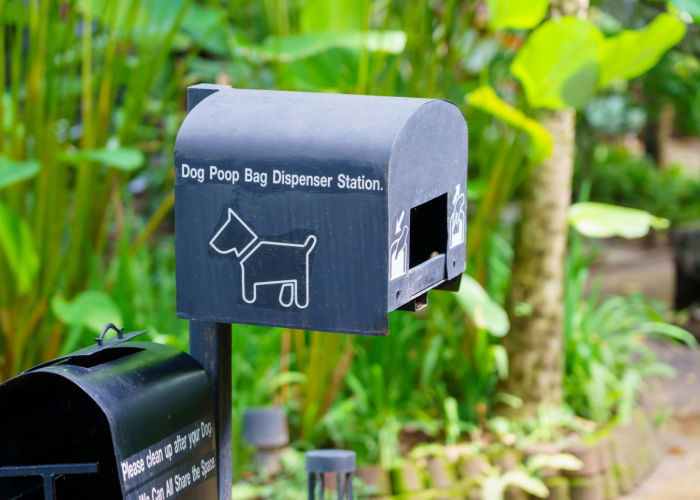
8. Forgetting to bring poop bags
First things first, you should know that not every dog park offers the same amenities.
Some have water fountains, picnic tables, and benches but not poop bag dispensers!
Dogs cannot alert us in advance when they need to defecate so that we can prepare.
If you potty-trained them, that’s great!
If not, anticipate them to suddenly poop anywhere (even in prohibited areas), no matter the place or situation.
If you know proper dog etiquette, poop bags should be stashed away for this situation.
Let's be realistic, though. Some dog owners forget to carry poop bags, and when their dog decides to defecate in the dog park, they are forced to flee in embarrassment.
This is one of the most common mistakes dog owners make.
RELEVANT READ: Doggy Poop Bags and How We Live With Them
9. Bringing in a dog that lacks recall skills
Another thing: No recall skills, no dog park.
But what does it mean to have recall skills?
Imagine your four-legged friend escapes and starts to run toward danger.
When you call him, you want him to turn and sprint back to you quickly.
Your goal here is to create training repetitions so that turning and sprinting toward you becomes more automatic.
Making training fun for your dog is one way to teach recall, according to the AKC.
Show them a treat or give them praise as they approach you before rewarding them.
After a few practice sessions, add your chosen verbal signal (such as “come,” “here,” etc.) whenever Fido looks at you and begins to approach you.
RELEVANT READ: 8 Tips on How to Train a Dog Not to Run Away
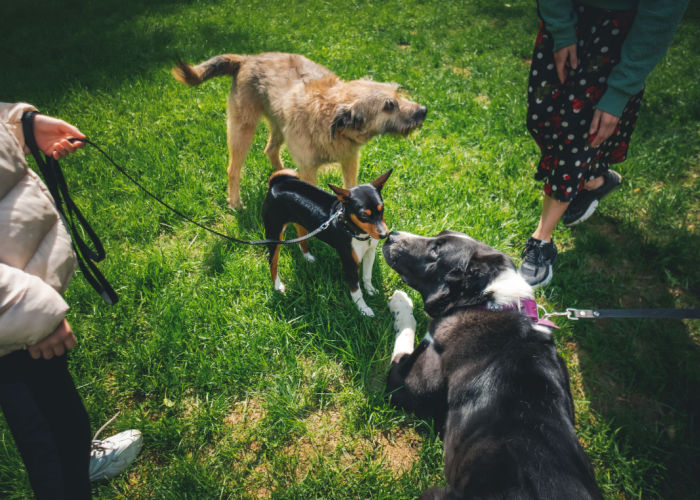
10. Bringing a dog that lacks greeting skills
Whether Fido is timid and uneasy or too overbearing, you have to help him in making the adjustment to the dog park and encourage proper behavior.
Remember: The dog park is a highly stimulating place for our dogs.
Greeting other dogs sets the tone for your dog's time in the park.
Like humans, we appreciate and regard it as a pleasant gesture when someone shakes our hands after introducing themselves.
If they don’t and appear less interested, you might find that person rude.
The same goes for our dogs when they first meet.
But how do we ensure our four-legged friends are well-behaved and calm when they enter the dog park?
Teaching your dog to wait, turn and sit, and heel while on a leash is the key to achieving that.
Pay attention to your dog and intervene if there is any rising tension.
Don’t let them “work it out” themselves. It’s not a wise strategy and will only result in a fight.
By stepping in, Fido learns what’s acceptable.
11. Chatting with other humans rather than supervising the dogs
While we can greet and chat with other fur parents in the dog park, we should remember that our dogs come first.
You might think, “But I bring mine to fenced dog parks. It’s supposed to be safer there.”
We know many fur parents think the same way.
Actions speak so loudly, and I've lost count of the times I've observed dog owners gather around a picnic table and chat while neglecting to watch their dogs.
No law forbids you from chatting. We're also not saying it's wrong.
But we suggest you can do this socializing while also facilitating your dogs.
A fenced dog park doesn’t assure everyone’s safety because anything bad can happen in the vicinity.
Injuries and fights can still happen, for example.
Kit Darling, infection control coordinator at the Texas A&M College of Veterinary Medicine & Biomedical Sciences, said,
“Pay close attention to the dogs and their body language. Interrupt play if necessary to calm their behavior, and remove your dog if it is afraid or being bullied by others.”
Keep your dog in sight at all times, and stop any questionable games, such as stalking or aggressive tug-of-war.
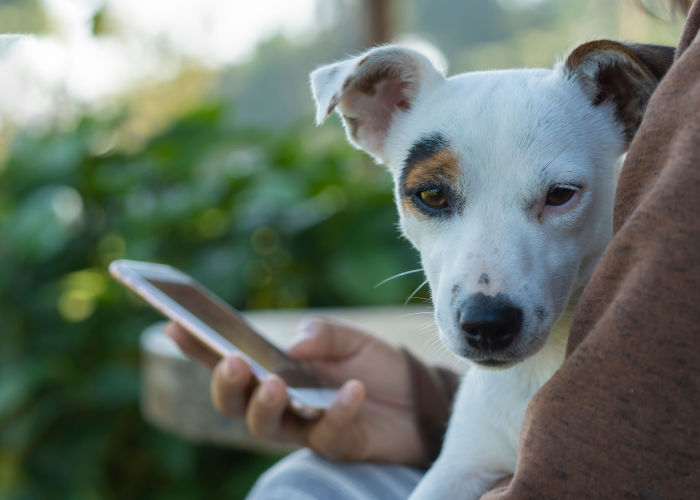
12. Spending more time looking at a smartphone screen than at the dogs
Too much time looking down at the phone is one of the common mistakes dog owners make in dog parks.
Your smartphone shouldn't become a distraction, just as chatting with other dog parents shouldn't take precedence over watching Fido.
Serious question, though.
Why bring your furry pal to the dog park if you intend to spend the entire time on your phone?
Imagine your dog being excited only to end up standing there and staring at his busy human.
Fido can also take advantage of the fact that you're not paying attention to him and cause trouble in the dog park.
Please, folks. Don't leave your dog's care in other dog owners' hands while you're busy texting or scrolling.
It’s going to be frowned upon.
13. Bringing a puppy or dog that is not vaccinated
Sometimes, we can’t show our new pups off to the world.
Immediately taking these adorable puppies to the dog park is not a good idea.
Your pooch must remain safe from dangerous dog park diseases until its vaccination is complete.
Your pup begins receiving its first dose at 8 weeks, and the full series is complete around 16 weeks of age.
These vaccines shield your pup's immune system from common diseases, such as parvovirus, distemper, and parasites.
Vets advise you to wait until your puppy's vaccine series is complete before interacting with any unfamiliar or unvaccinated animals.
We don't know for sure if every dog in the dog park has a disease carrier, right?
So until then, keep the playdate in your yard.
These little ones need socialization as well, but it is best to start by introducing them to your other household pets that recently received vaccinations and to other family members.
RELATED: Vaccinating Your Dog: Everything You Need To Know
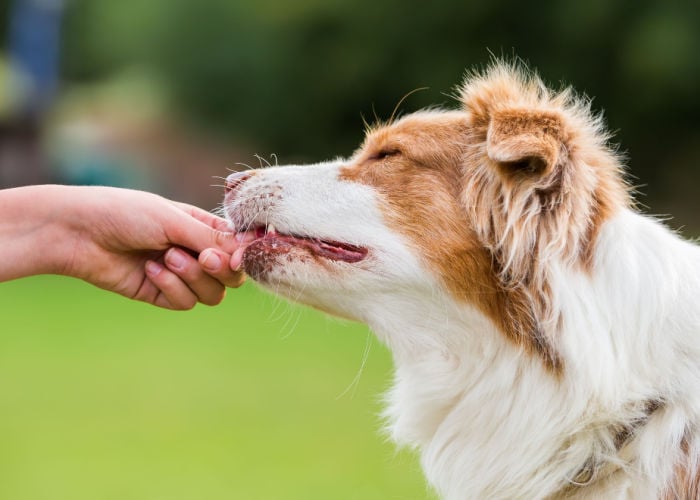
14. Giving food or treats to other dogs
In the dog park, friendly dogs may approach you for some head or belly rubs.
No matter how tempting it might be, you should absolutely avoid sharing any food or treats.
Don't ever give these treats without the owners’ permission, especially since there might be food allergies that you’re not aware of.
In addition, not only friendly dogs are present in dog parks.
Like the dog attack we mentioned earlier, it's evident that there are hostile dogs you might run into.
So, always ask before giving out food, and keep your treats with you at all times.
15. Forcing an uncomfortable dog to go to the park
One of the mistakes dog owners make in the dog park is bringing their uncomfortable dogs.
Please, don’t force your four-legged friend to go to dog parks when he doesn’t want to be there.
On the surface, everything appears to be great, but if Fido feels uneasy, he may go off at any time.
The fact that he turns into a ticking time bomb is perhaps the reason why so many people claim that the attack “came out of nowhere.”
Work with your fur baby—not against him or her.
Get to know your dog and what they like, not what you want they should like!
Mistakes Dog Owners Make In Dog Parks: FAQs
Can dogs pick up bad habits from dog parks?
A dog park setting allows dogs to pick up bad habits from one another, such as aggression, digging, excessive barking, and rough play.
Your dog might respond similarly if he observes another dog doing one of these, and these bad habits will stick around.
RELATED: How Can You Tell if a Dog is Aggressive
How often should I take my dog out to the park?
Ideally, let your dog go outside three to five times per day. Although some active breeds, like German Shepherds and Golden Retrievers, may need more.
You can lengthen your walks or step up the level of exercise you give your pooch in the dog park, depending on their age and health.
How do I know my dog will behave at a dog park?
WebMD says dogs at play have wagging tails and relaxed ears and may “play bow” by lowering their front end to the ground.
On the other hand, if your dog is anxious or afraid, he can shiver, draw his ears back, or crouch.
RELEVANT READ: 7 Most Common Signs of Anxiety in Dogs
What are the cons of taking your dog to a dog park?
There is a possibility that your dog could run off and get lost if the park is unfenced.
Additionally, they can contract diseases and run into each other violently. Given this, young, unvaccinated puppies should not be taken to dog parks.
Mistakes Dog Owners Make In Dog Parks: Takeaways
When you actively supervise your dog and ensure that he acts appropriately, you qualify as a good dog park fur parent.
A dog park would be a safe place with no downsides if we all were responsible, watchful, diligent, and invested in teaching our dogs.
This translates to fewer illnesses, accidents, dogfights, and more playtime, running, and exercise!
Do not repeat the same mistakes dog owners make in dog parks by being considerate of everyone else's dogs.
This way, we can all unwind and enjoy our time with our beloved furry friends!












